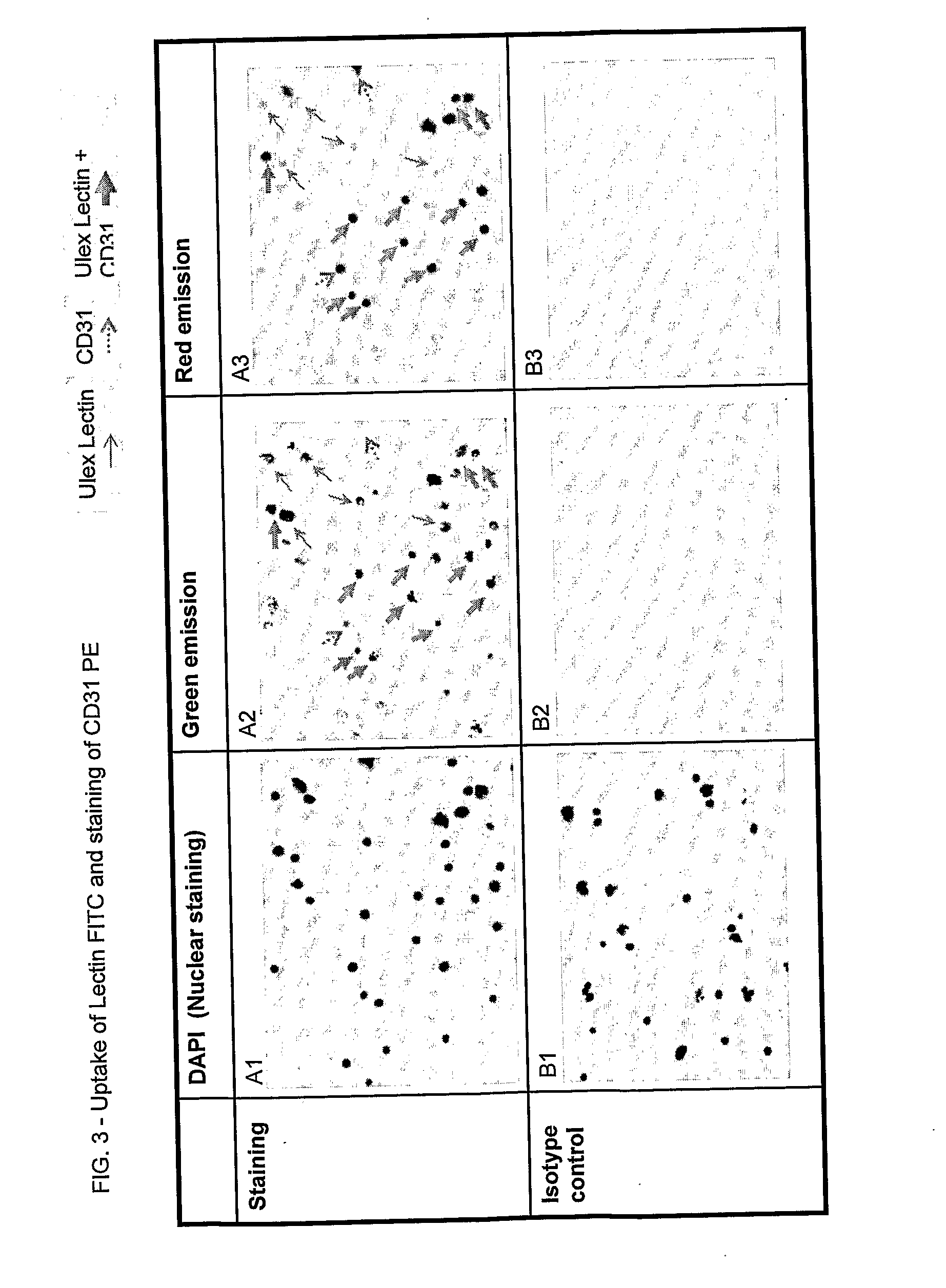Regulating Stem Cells
a stem cell and stem cell technology, applied in the field of stem cell regulation, can solve the problems of not being able to efficiently produce cultures of specific cell types, and achieve the effect of slow cell release and increased survival of pcp
- Summary
- Abstract
- Description
- Claims
- Application Information
AI Technical Summary
Benefits of technology
Problems solved by technology
Method used
Image
Examples
example 1
[0532]A test was carried out in accordance with an embodiment of the present invention, and results are shown in Table 1 below. Peripheral blood was extracted from ten human volunteers for use in ten respective experiments. In each experiment, cells were fractioned from the blood using a Ficoll™ gradient in order to generate a population of peripheral blood mononuclear (PBMC) cells as source cells (“S. cells”). Subsequently, a CCP was generated in accordance with protocols described herein for Percoll (TM) based enrichment. Results in Table 1 show enrichment of the percentages of CD34+CD45− / Dim cells in the CCP compared to the source cells. Enrichment is defined as the percentage of cells having a given characteristic in the CCP, divided by the percentage of cells having that characteristic in the source cells.
TABLE 1% CD34+% Viability% CD45CD45− / DimExpS.S.EnrichmentNocellsCCPcellsCCPS. cellsCCPfactor197.5697.8694.0093.461.44.072.9298.4997.6192.0987.100.773.484.5394.2810094.7296.440...
example 2
[0533]In a separate set of experiments, in accordance with an embodiment of the present invention, results were obtained as shown in FIG. 1 and Table 2 below. Peripheral blood was extracted from ten human volunteers for use in ten experiments. A CCP was generated in accordance with protocols described herein (see Example 1). Results in FIG. 1 and in Table 2 show the fluorescent intensity of CD31Bright cells in the CCP. CD31 brightness (Dim or Bright) is defined as the ratio between intensity resulting from staining using anti-CD31 FITC-conjugated monoclonal antibodies and intensity resulting from staining using isotype control FITC-conjugated antibodies.
[0534]FIG. 1 is a graph showing results obtained from CCP cells in one representative experiment, in accordance with an embodiment of the present invention. CCP cells stained using isotype control FITC-conjugated antibodies are represented by the dashed line and CCP cells stained using FITC-conjugated anti-CD31 antibodies are represe...
example 3
[0539]In a separate set of experiments, in accordance with an embodiment of the present invention, results were obtained as shown in Table 3 below. Peripheral blood was extracted from nine human volunteers for use in nine experiments. A CCP was generated in accordance with protocols described hereinabove with reference to Example 1.
TABLE 3% CD31BrightEnrichmentExp No.S. CellsCCPFactor110.160.46.0225.480.853.2319.176.854.0425.177.33.1516.175.84.7612.775.05.9717.553.33.1821.980.963.7918.664.583.5AVG18.571.674.13
Results in Table 3 indicate percentage enrichment of CD31Bright cells in the CCP as compared to the source cells.
PUM
 Login to View More
Login to View More Abstract
Description
Claims
Application Information
 Login to View More
Login to View More - R&D
- Intellectual Property
- Life Sciences
- Materials
- Tech Scout
- Unparalleled Data Quality
- Higher Quality Content
- 60% Fewer Hallucinations
Browse by: Latest US Patents, China's latest patents, Technical Efficacy Thesaurus, Application Domain, Technology Topic, Popular Technical Reports.
© 2025 PatSnap. All rights reserved.Legal|Privacy policy|Modern Slavery Act Transparency Statement|Sitemap|About US| Contact US: help@patsnap.com



